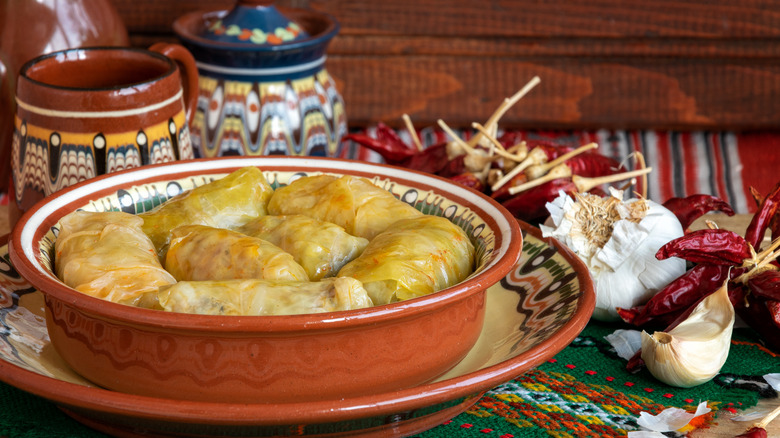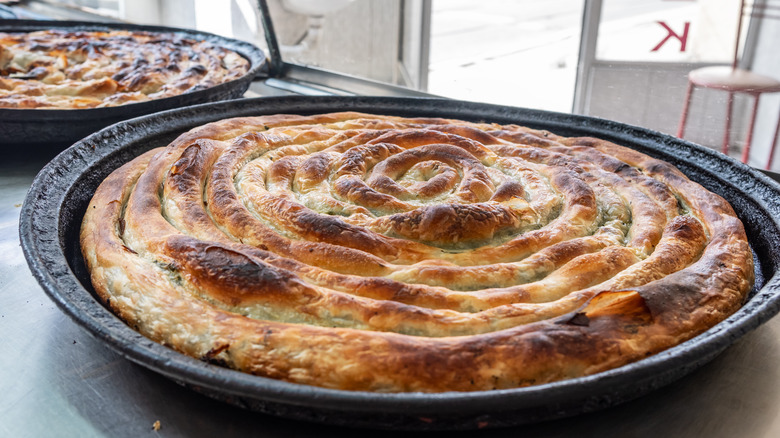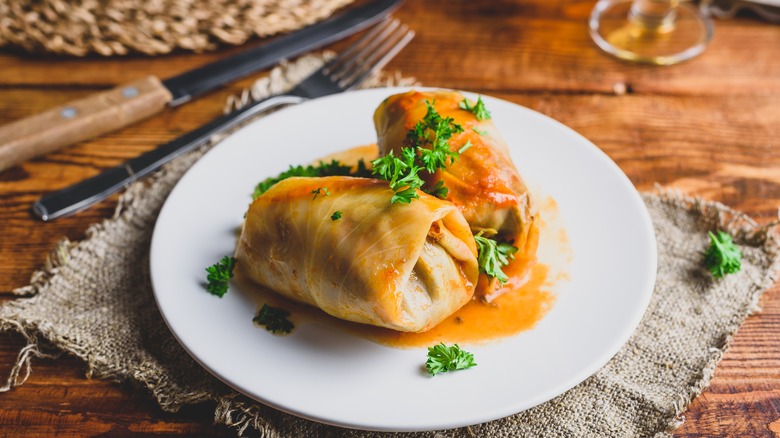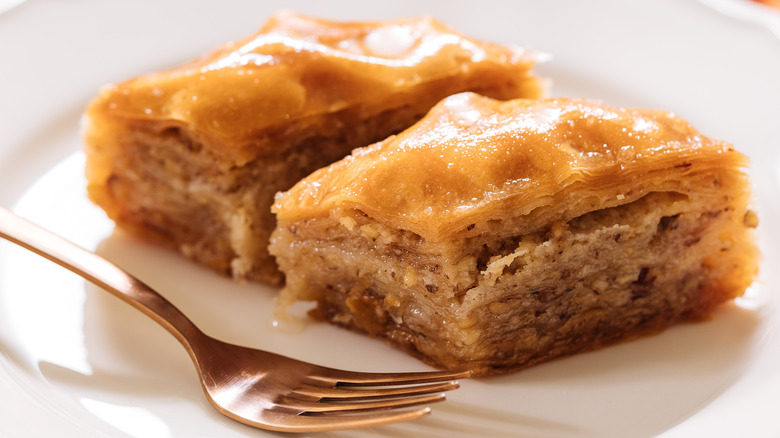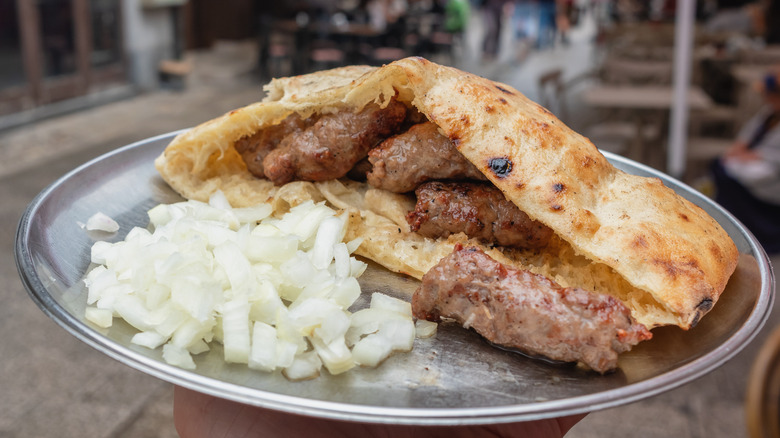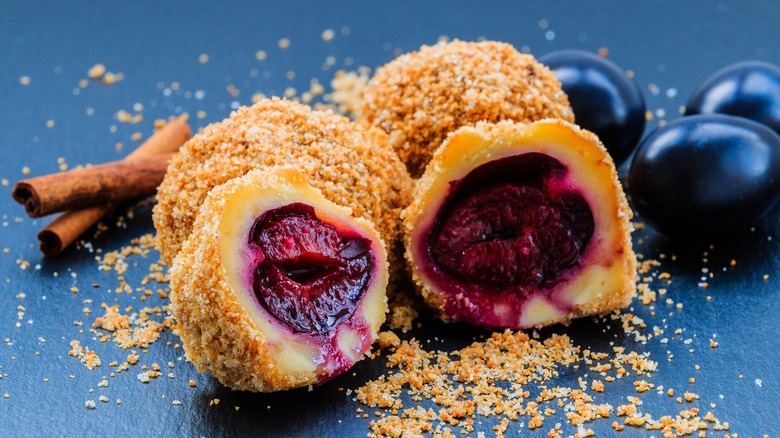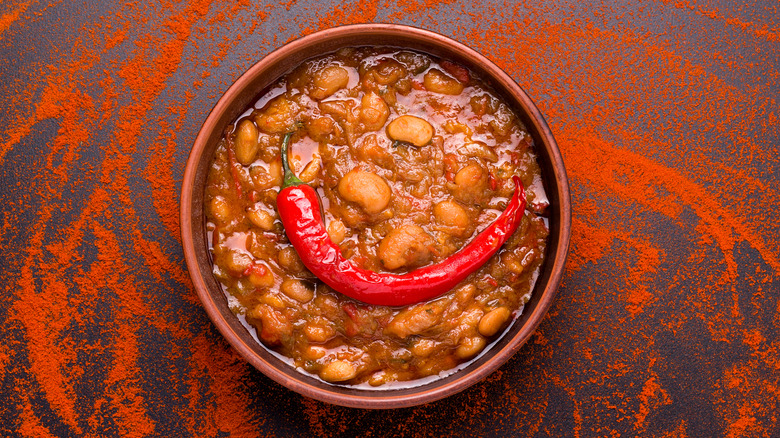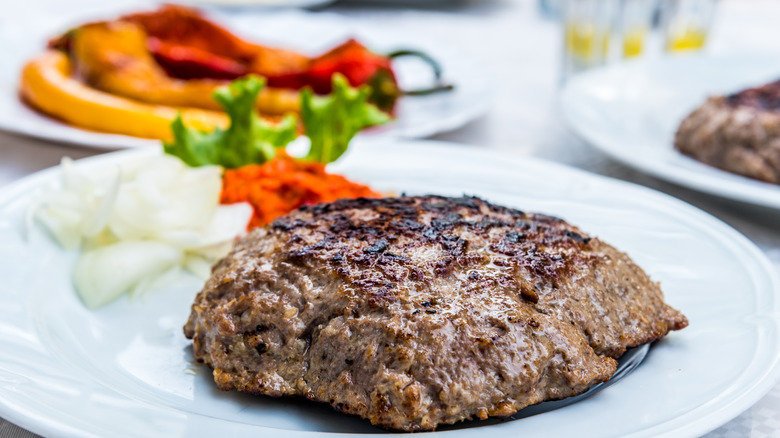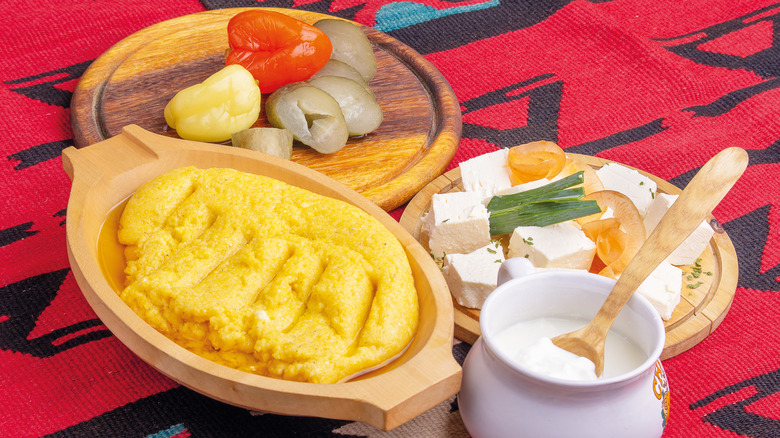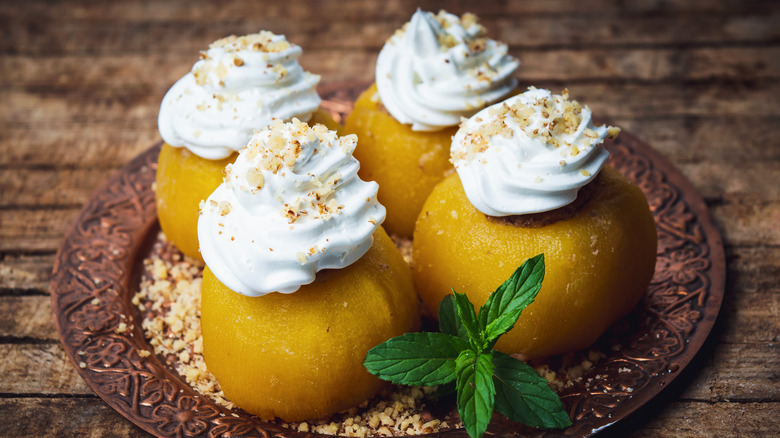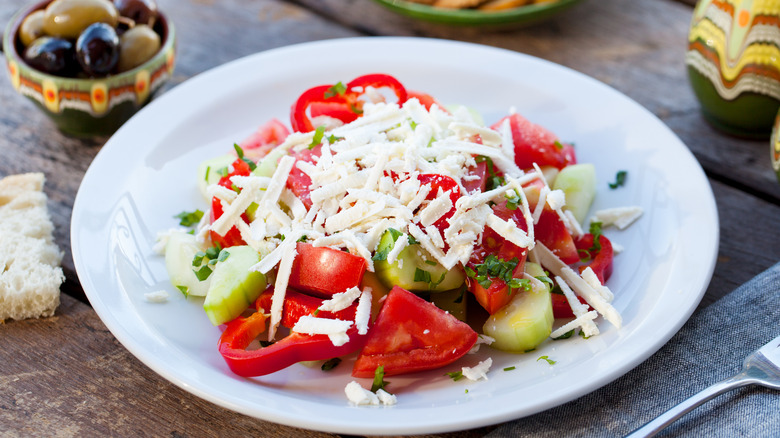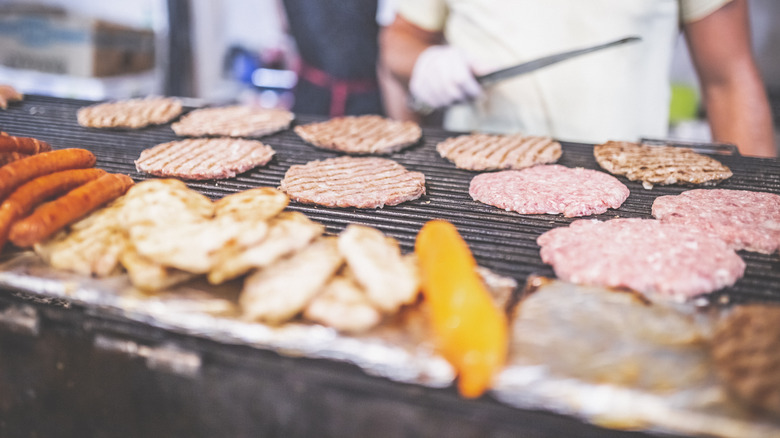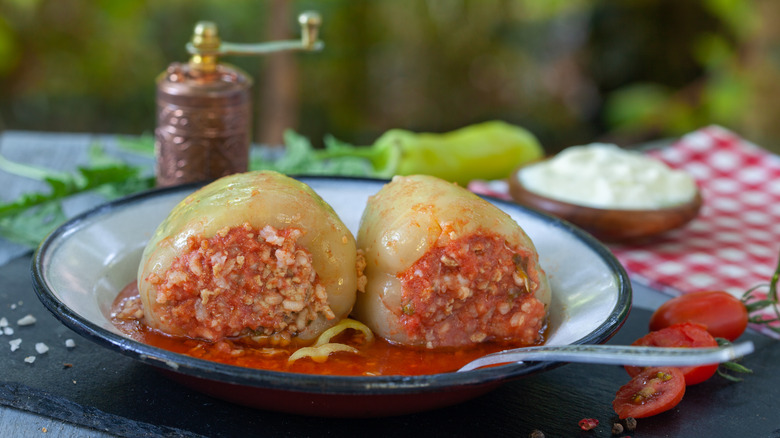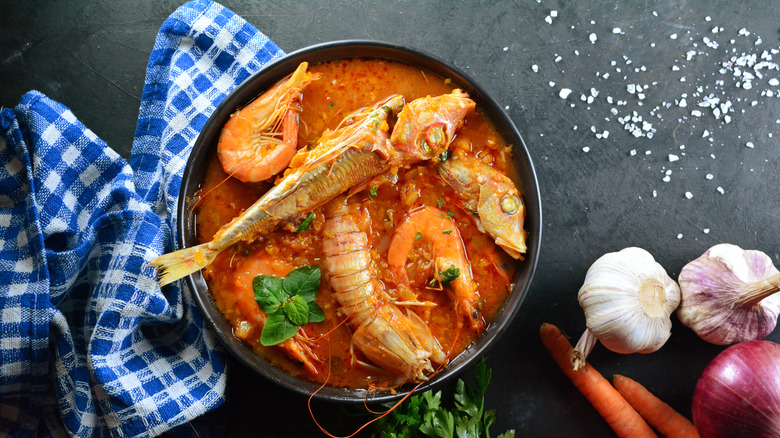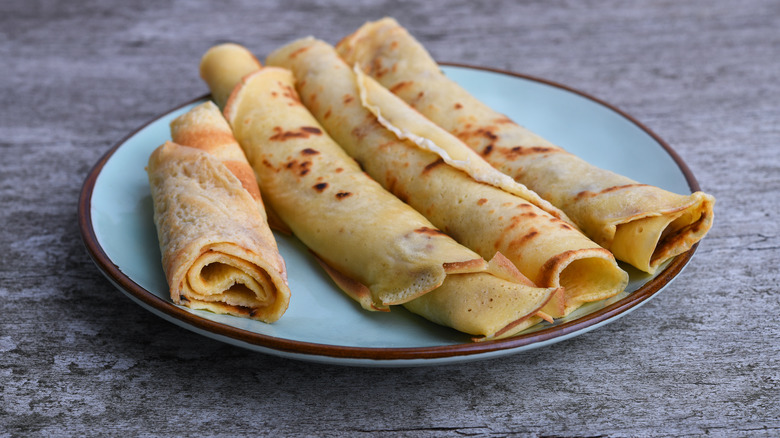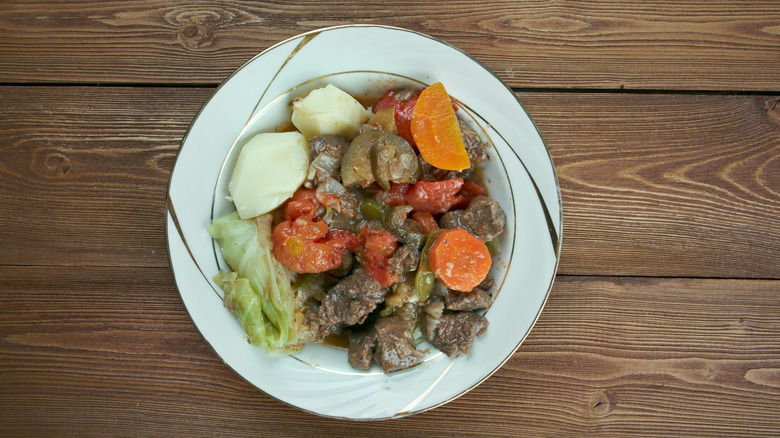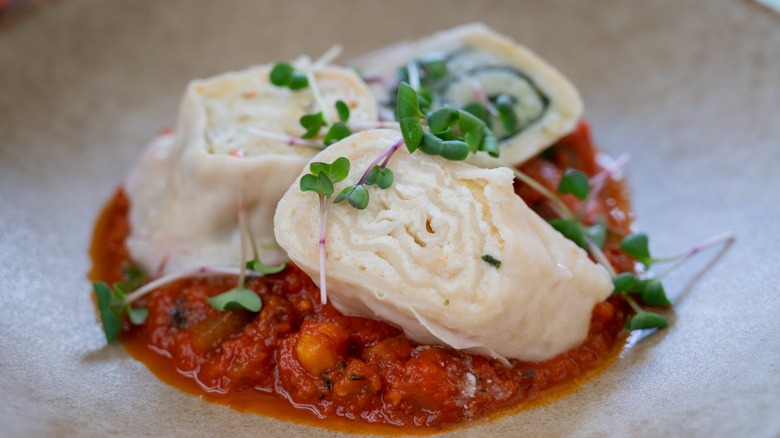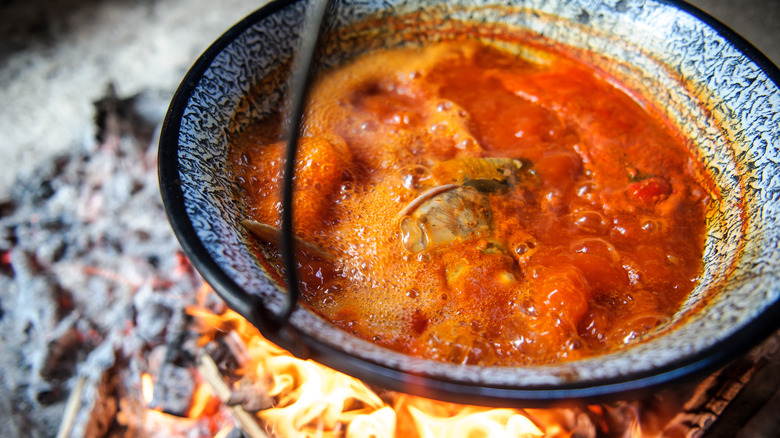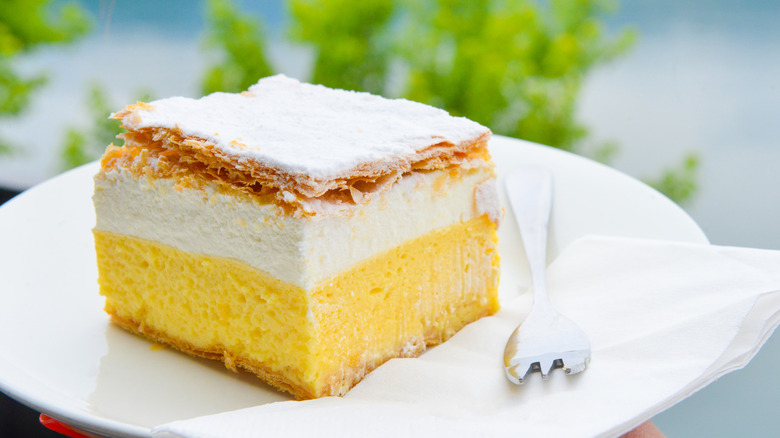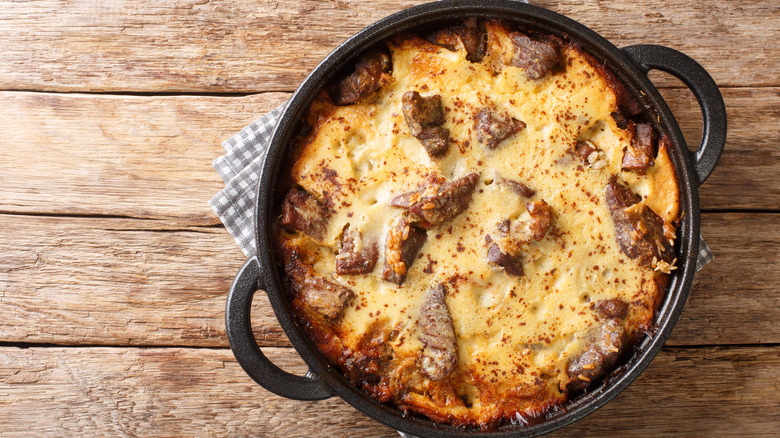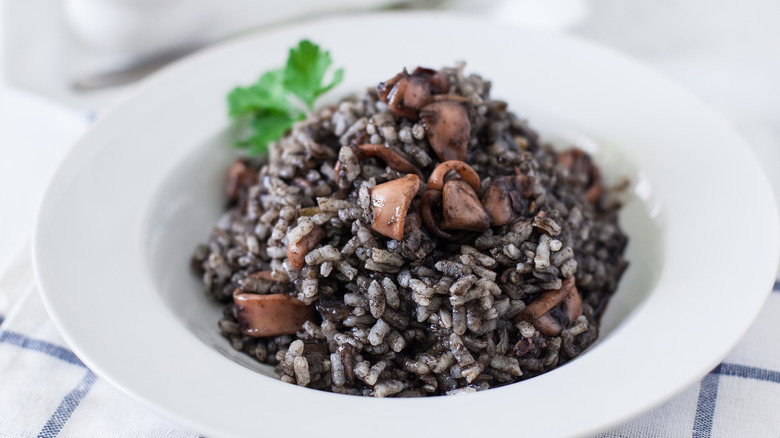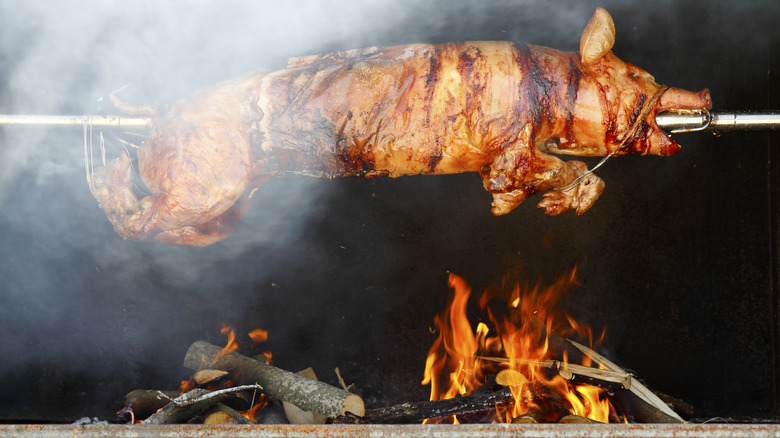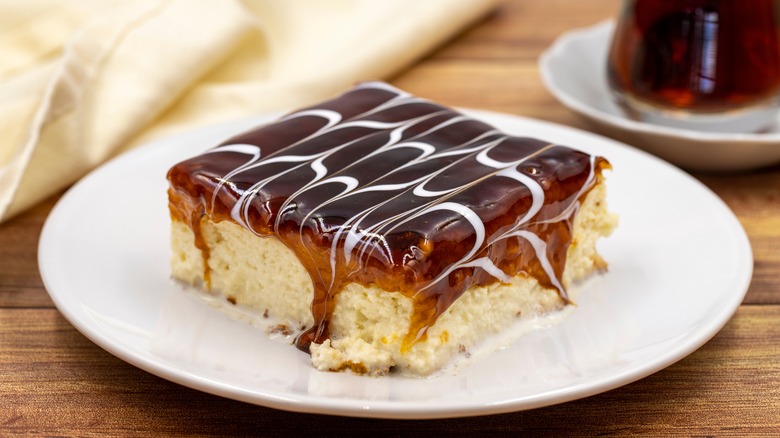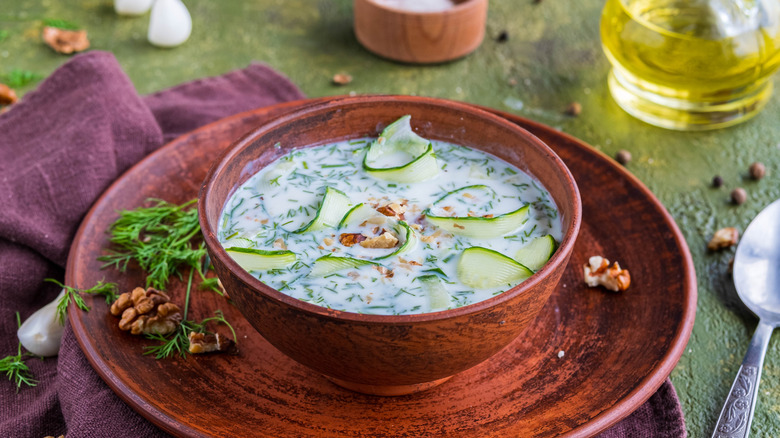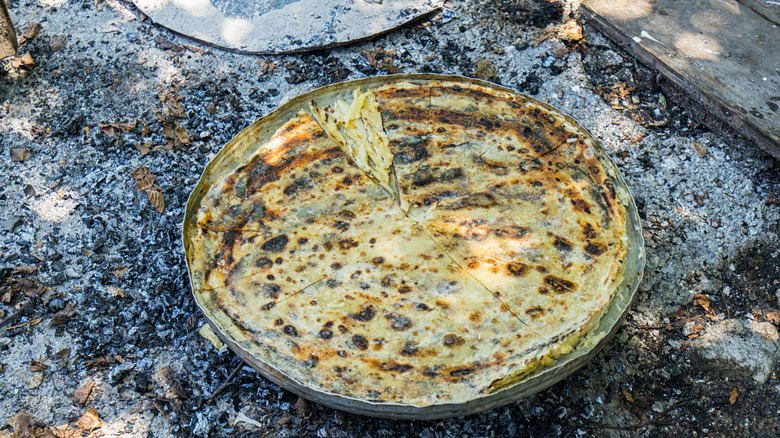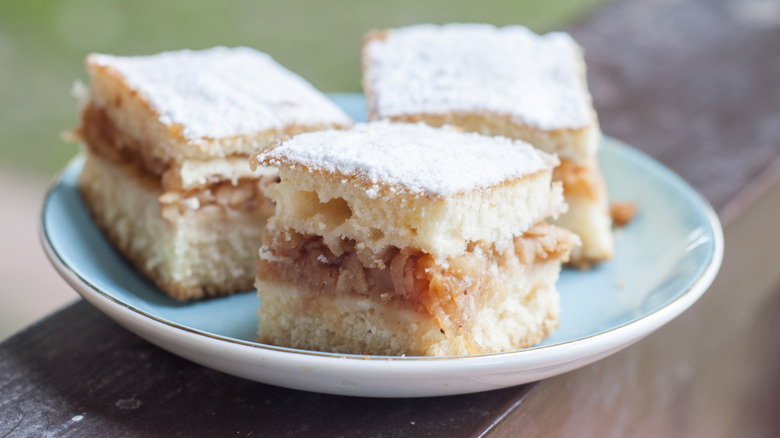25 Balkan Dishes You Need To Try At Least Once
In the geographical context, the Balkans is usually described as a region nestled on the Balkan peninsula bounded by the Adriatic on the west and the Black Sea on the east, with the Mediterranean making its southernmost point. In the cultural context, the Balkans have always been a point of contact between the East and the West. Though this provided a fertile ground for conflict, the region also became an epicenter of cultural pluralism. At least ten countries call the Balkan peninsula their home, and this cultural patchwork is heavily translated into the culinary narrative. Though it was strongly influenced by imperial Austria and the Ottomans, Balkan cuisine developed into a unique entity, creating a cuisine with a polyamorous character where dishes are shared and adopted rather than being restrained by borders.
Gastronomy-wise, the Balkans are the European underdog. Balkan food sticks to the no-nonsense approach. These dishes are simple, hearty meals that speak of home, comfort, and fantastic cultural diversity. This was a frugal cuisine, where locally sourced ingredients were transformed into filling meals with sheer ingenuity and imagination, so expect rustic meals with a lot of soul.
All these must-tries should be an invitation to delve deeper into the Balkans and its limitless culinary potential. Greece was intentionally left out as it is generally analyzed outside the Balkan context and has its separate list of must-try Greek foods.
1. Burek
Burek is a savory pastry and a popular culinary relic left by the Turkish. Modeled on ancient börek, it is a quintessential part of everyday life in the Balkans that is regularly enjoyed throughout the day but best works as a filling breakfast.
At its most basic, burek is assembled with paper-thin phyllo sheets packed with fillings and tightly rolled into a large coil to attain a pie-like shape. The one to try is the traditional sač, where the pies are nestled and baked under coal-covered domes. The situation with the fillings is complicated, as Bosnian terminology deems that burek can only be made with ground meat, while cheese, spinach, and potatoes can only be called pita. In other countries, the term burek is used for all varieties.
2. Sarma
Sarma or sarmale, a combination of fermented cabbage filled with a mix of ground meat and rice, seems to be the unquestionable regional favorite. As it is quite heavy, sarma is better suited for colder months.
Cabbage leaves are stuffed and wrapped in tight, compact rolls that simmer in a flavorful broth, usually with tomato sauce and smoked meat that imparts subtle smokiness. Though sarma is universal to most Balkan countries, there is no one-fits-all recipe, and you'll find variations across the region. Sarma is a typical homemade specialty, usually prepared for various wintertime festivities, but you'll find it in most traditional restaurants, usually as a part of the seasonal winter offer.
3. Baklava
Baklava is one of the Balkan dishes that perfectly illustrates the historical connection with the Turkish Ottoman Empire. But Bosnian baklava is not exactly like the original Turkish version. It does start with many butter-brushed layers of phyllo sheets sprinkled with a mix of ground and chopped nuts and gets doused with lemony syrup, but it is usually much bigger and juicier than its Turkish counterpart. Bosnian baklava is usually walnut-based, cut into large diamond-shaped slices, and should always be served well chilled. Though the syrup usually blends sugar, water, and lemon, several regional interpretations use honey or other natural sweeteners.
Baklava is impressively sweet and best paired with a cup of dark Bosnian coffee. You'll find baklava in restaurants, pastry shops, and bakeries in most parts of the Balkans.
4. Ćevapi
Ćevapi are small, sausage-like ground meat rolls traditionally prepared on a grill. A standard order includes ten pieces, usually served inside or with lepinja, a regional flatbread similar to pita bread, and a hefty dose of raw, chopped onions.
Ćevapi come in four regional varieties, but don't try to find out which is the best, as everyone has a firm favorite. The only rule that should be followed is that they are prepared on a charcoal grill to attain some smokiness. You will usually find ćevapi at specialized eateries serving grilled delicacies, but they have become ubiquitous on most restaurant menus. Ćevapi know no borders, and you will have no trouble finding them in Croatia, Slovenia, Serbia, Montenegro, or Romania.
5. Knedle
Knedle or gomboce are hefty potato dumplings with a juicy fruit-based core. Their origin is most likely Austro-Hungarian, and you'll find similar varieties in many Central European countries.
What sets knedle apart is the distinctive dough built from mashed potatoes, eggs, and flour. The dough is folded around the fruit, and the dumplings are boiled and then tossed with a buttery mix of sugar, breadcrumbs, and a sprinkle of cinnamon. The traditional filling inside the dumplings is a whole plum, and as only fresh fruit should be used, these dumplings are primarily associated with summer and autumn when plums are in season and come in the ripest, juiciest form. They are usually eaten as a dessert but also make a wonderful, subtly sweet main course.
6. Gravče na tavče
Gravče na tavče is best described as a pot of baked beans. Though traditionally associated with North Macedonia, a similar dish, better known as prebranac, is also found in Serbia.
There are many different recipes for this rustic classic, but the best are made with white beans from Tetovo. The dish is always made with dry beans, preferably cooked with smoked meat. Before they are baked, the beans are doused in a thick, roux-like mix of flour and paprika, giving this dish an incredibly creamy texture. The spices here are big and bold, involving paprika, garlic, and some herbs to balance out the flavors. The dish is baked and served in earthenware pots and usually accompanies grilled meat.
7. Pljeskavica
Pljeskavica is a Balkan-style burger made with ground meat, spices, and onions. The meaty mix is smashed and shaped until round and thin, much wider and slender than your classic burger patty. It is then thrown on the grill — charcoal grills are a must — until it attains a smoky char.
Every grill expert has their secret recipe, but at its core, the mix calls for ground beef or veal, with the occasional addition of lamb or pork. You will usually find it at casual establishments specializing in all things grilled, where it is mainly served as an entrée, usually accompanied by fries, clotted cream spread (kajmak), and a red pepper relish (ajvar). It is also commonly tucked inside flatbread and enjoyed as street food.
8. Cicvara
Cicvara is a rustic dish best described as a corn flour porridge. It's typical in many Balkan regions and is often described as one of those humble, universal dishes that helped feed generations. There are several ways to make cicvara, but the preparation usually entails fine corn flour cooked into a creamy porridge enriched with clotted cream or cheese. The dish calls for some skill and has to be continuously stirred until the fat partially separates from the creamy blend.
As it is such a heavy, fat-laden, and calorie-dense dish, cicvara was mainly eaten as breakfast. It was especially popular in mountainous regions where milk, cheese, and cream were abundant, and it represented an affordable, everyday meal. It is always served warm, on traditional wooden plates.
9. Tufahija
Tufahija is a Bosnian classic that originated sometime during Ottoman rule. It is a dessert unlike no other that captures the true essence of Bosnian pastry tradition that is simple and modest, but creates elegant and amazingly luscious, sweet treats.
Tufahija is a dessert that starts with a whole peeled and hollowed apple poached in lemon and vanilla-flavored syrup and stuffed with a buttery mix of chopped walnuts and sugar. It is then nestled in a shallow dish, doused in the same syrup, and left to chill. As a final touch, when they're ready to be served, each apple is garnished with a dollop of whipped cream. The result is a fork-tender treat with a perfectly balanced sweetness, buttery tenderness, light creaminess, and a nutty crunch.
10. Shopska salad
Shopska salad combines tomatoes, cucumbers, and peppers, all assembled in a dish and topped with grated or crumbled sirene, a local salty white cheese. Though it was once believed that shopska had a long history in Bulgaria, probably relating to the Shopi people, the truth is more straightforward. It seems that its invention goes back to the Communist era when the biggest Bulgarian tour operator decided that there was a need for a dish to show off some national character. The creation was this simple salad with red, green, and white elements — the colors that would represent the Bulgarian flag.
The locals especially like to pair it with grilled meat as the freshness and cheesy creaminess help to balance out all those heavy, smoky flavors.
11. Leskovac grill
Grilling is the favorite go-to method for cooking meat across the Balkans, but Leskovac deserves a separate mention. This Serbian city is known as the grill capital of the Balkans, and the term Leskovac grill references a style and a group of dishes that come from the grill, mainly focusing on ground beef delicacies such as ćevapi, pljeskavica, and sausages.
It is said that only true masters know the authentic recipes and the proper techniques reserved for traditional charcoal grills, which allow the meat to soak up all that smokiness. Traditionally, the meat is partnered with red pepper relish, thick clotted cream, and local flatbread. Though the best versions are found in Leskovac, eateries that mimic this superior grilling style are scattered throughout the Balkans.
12. Stuffed peppers
Stuffed peppers is another dish that pops up all across the region, albeit in several different forms. The prevalent version is filled with a blend of ground meat, spices, herbs, and rice, which are slowly simmered in a subtly spicy broth. This version generally appears in the summer when peppers are in season and typically replaces sarma as a somewhat lighter summer alternative. In most cases, the order will come served with a hefty amount of creamy mashed potatoes and a spoonful of the flavor-packed broth.
Though the peppers are mostly boiled, they can be baked in the oven, such as Bulgarian palneni chushki, to get a nice, smoky char. Vegetarian versions are also common.
13. Brudet
Brudet is a dish reserved for the Adriatic coast. A close sibling to Italian brodetto, this dish is a combination of fresh fish, crustaceans, or eel drowned in a flavorful tomato-based broth.
There is no uniform recipe for brudet. Whatever fish is on hand goes inside the pot. The fish is sliced into larger chunks, but smaller varieties are sometimes added whole. Traditionally, the dish starts with sautéed onions and a wonderfully aromatic broth built with tomatoes, dry wine, herbs, spices, and some vinegar. Sometimes, you'll come across variations that add a splash of seawater for the ultimate marine touch. Some varieties also include crustaceans, while a truly unique version comes from Neretva, where brudet is made with eel and frogs, while the fish is optional.
14. Palačinke
Palačinke are best described as close relatives to French crêpes. These are thin, round pancakes that come packed with various fillings.
Palačinke are usually paired with jams or a generous layer of chocolate spread. Sometimes, you'll even find the baked versions packed with a mix of sweetened fresh cheese. Most traditional restaurants carry this simple dessert on the menu, usually accompanied by a walnut filling, honey, fruit jam, or whipped cream, while the Serbian favorite also includes a light sprinkle of crumbled cookies. In the recent decade, many specialized restaurants have popped up across the region, but they usually whip up less traditional and more lavish versions. The Balkans is probably the only region that makes savory, deep-fried versions of these pancakes.
15. Bosanski lonac
Bosanski lonac may win the title of the most comforting Balkan dish. This rustic stew translates as a Bosnian pot, and as the name suggests, it finds its home in Bosnia, where it was mainly made for festivities and various celebrations. The dish is assembled in one pot — hence the other part of its name — where all ingredients are slowly simmered until they create a perfectly balanced blend.
This is one of those ancient dishes whose origin is difficult to pinpoint, but it said that the ingredients represent nationalities that call Bosnia their home. Though you will find seemingly endless seasonal variations, in most cases, the pot will include layers of beef and lamb simmered with carrots, potatoes, and cabbage.
16. Štrukli/štruklji
Štrukli or štruklji are often described as the Balkans' unique take on Austrian strudel. Though the names reflect this similarity, in reality, these Balkan treats are distinctively unique.
You will find štruklji in Slovenia. They appear in many different varieties but mostly incorporate rolled dough and a sweet or savory filling, and they can be boiled, baked, or steamed. Though similar, štrukli are a Croatian specialty. They are always made with phyllo pastry and are mostly filled with savory cottage cheese. When the dough is rolled, it is cut into smaller pieces that can be baked or boiled. The baked version is the absolute favorite as it is typically smothered in copious amounts of cream, which takes this dish to a different level.
17. Fiš paprikaš
Fiš paprikaš hails from Baranja, a Croatian region where culinary practices resemble those of the neighboring Hungary. The region is crisscrossed by rivers, so having river fish as the star ingredient is not at all surprising.
Best described as a spicy fish stew, fiš paprikaš is usually made with carp, but you will often find versions with catfish and pike. The fish is cut into large chunks and gets cooked in a flavorful broth laden with sweet and spicy paprika. Though paprika is the dominant spice that delivers zest, sweetness, and earthiness, the stew gains a lot of character from the fish, sautéed onions, and tomato sauce. Fiš paprikaš is traditionally made in a cauldron over an open fire, adding to its rustic charm.
18. Kremšnita
Kremšnita is a tall, elegant cake ideal for fans of ultimately creamy desserts. This dessert has several regional variations, all built with crispy puff pastry and a thick layer of vanilla-flavored custard.
The two most popular versions come from Slovenia and Croatia. Slovenian take, locally called kremna rezina, originates from Lake Bled, where it was first whipped up sometime in the 1950s. It is assembled with puff pastry sheets holding a generous layer of custard and feather-light whipped cream. The Croatian version is mainly associated with Samobor, a picturesque city in the north where kremšnita has a cult status. This version skips the whipped cream and packs the cloud-like custard between the two layers of puff pastry.
19. Tavë kosi
Tavë kosi is a hearty Albanian casserole usually made with lamb. The meat is generally cut into larger chunks, laid on the rice, and then doused with a tangy mix of yogurt and eggs, which is occasionally amped with a classic butter and flour roux. The dish is then baked until the yogurt is fully set, creating a thick layer around the meat and keeping it nice and juicy.
Tavë kosi is a dish with an impressive and long history. The legend says that it was created in the 15th century, during the Ottoman occupation, when chefs decided to bake their yogurt marinade with meat. The dish was first assembled in Elbasan, and you'll often see the locals calling it tavë Elbasani.
20. Black risotto
Black risotto is one of the staple dishes on the Adriatic coast that is mainly associated with Croatia. This unusual-looking dish is a true homage to cuttlefish as it uses the ink and the tender meat to create flavor-packed and utterly creamy risotto.
The dish starts with sautéed onions and rice and follows the classic risotto technique. Preserved ink is added towards the end of the cooking, which turns this pristine risotto into a unique, pitch-black dish. Black risotto gains most of its character from the compact Adriatic cuttlefish, but it is also enriched with olive oil, herbs, stock, and a splash of wine, creating an aromatic, well-balanced dish. Black risotto is a staple in seafood restaurants but is also commonly prepared for Christmas Eve.
21. Spit roasts
The next item is not for the squeamish, but spit roast is such a Balkan classic that leaving it out from the must-tries would be a monumental error. Spit roasting is not exclusive to the Balkans, but the region has upgraded it to an art form.
In most cases, spit roasting is reserved for pork and lamb. The selection usually depends on the location and which animals were traditionally reared in the region. The animal is usually just generously salted, brushed with oil or lard, and then positioned on a rotating spit, always over an open fire. During this slow, lengthy process, the fire will gradually cook the meat, render the fat, and turn the skin into a crispy, golden treat.
22. Trilece
Trilece is a milky Balkan dessert with an unusual origin. This is the local take on tres leches, the classic South American specialty consisting of a thick sheet cake drenched in three types of milk. It is believed that the cake appeared due to the massive popularity of South American soap operas in the Balkans.
The Balkan trilece starts with a thick sponge cake, sometimes enriched with semolina, and pastry chefs use different dairy products to soak the cake to create that seriously juicy texture. Most varieties are topped with a thick layer of gooey, sticky caramel that contributes to the creamy texture and amps sweetness. Trilece can also pass as a sweet breakfast. You'll find it in several Balkan countries, and it has even become popular in Turkey.
23. Tarator
Tarator is usually associated with Bulgaria, but variations of this soup can be found in other Balkan regions. This is a straightforward dish best defined as a chilled cucumber soup. It uses yogurt as a base and boosts the flavor with garlic and dill, while the texture gets a subtle twist from the addition of walnuts, which also provide subtle nutty flavors.
The soup plays with similar elements you will find in the legendary Greek tzatziki sauce or Turkish cacik, so it is assumed that the inspiration came from these cuisines. Tarator is the perfect summer soup. The piercing tanginess paired with herbal nuances and the fact it is served chilled create the most refreshing soup you'll have the chance to try.
24. Flija
Flija is a unique baked pie that you will mostly find in northern Albania and Kosovo. The pie is usually assembled in large round trays, and it is traditionally baked over an open fire, usually protected by a dome-shaped lid covered in coals that will give this pie charred and crispy top crust.
Flija starts with a thick pancake-like batter that is spread into thin layers. Each layer is baked and set before another is added on top. Traditionally, each layer is repeatedly coated with a creamy mix of clotted cream, butter, milk, or yogurt. The process is replicated until all the batter is used up, and the result is a unique, layered pie brimming with creaminess and subtly smoky notes.
25. Lenja pita
Lenja pita, translated as a lazy pie, is a Serbian name for the classic Balkan-style pie that consists of a sweet filling tucked inside two layers of pastry crust. This is one of the simplest Balkan desserts, but it showcases the true spirit of Balkan cuisine that is simple, unpretentious, and inherently comforting.
The pastry should always be on the thicker side to give the cake a nice chew, but with enough filling to balance out the textures. Apples are the most common filling inside this pita, but it works with many seasonal fruits, and you'll commonly see variations stuffed with sweetened cheese or poppy seeds. This pie is rarely featured on restaurant menus, but you'll find it in local bakeries and many Balkan households.
